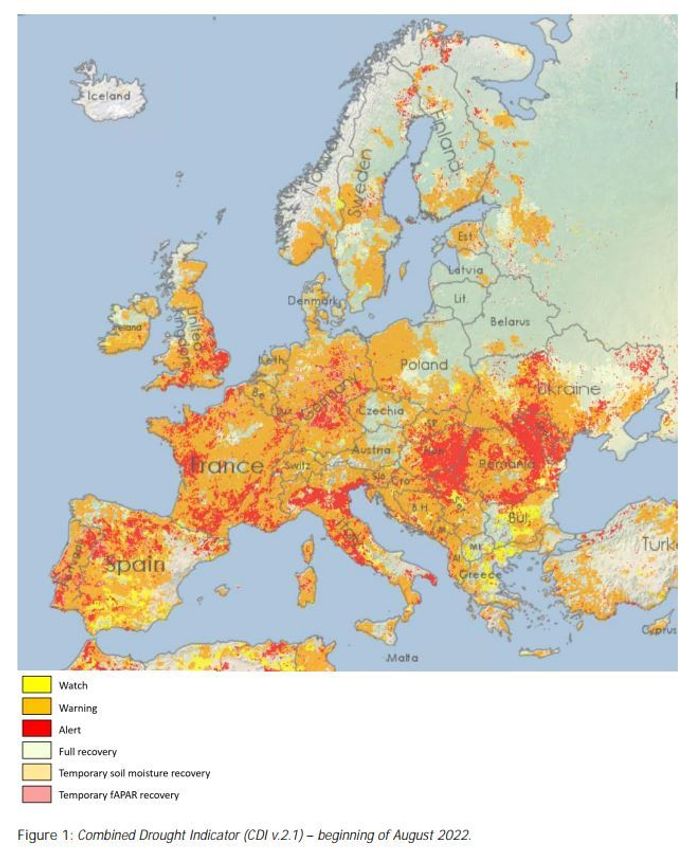The European Union is facing its worst drought in at least 500 years, with more than half the continent under a warning for dry conditions following a brutal summer of extreme heat.
That’s according to a new report by the European Commission’s Joint Research Center latest August drought report, an update on the crisis based on data from the European Drought Observatory. Final data at the end of the season may confirm the historical drought, the report said.
Mariya Gabriel, commissioner for innovation, research, culture, education and youth said in a statement that severe drought and heat waves have caused “unprecedented stress” on water levels.
“We are currently noticing a wildfire season sensibly above the average and an important impact on crops production,” said Gabriel. “Climate change is undoubtedly more noticeably every year; the European Commission and its scientists are working tirelessly to map and study this crisis…”

The study found that 64% of Europe is under drought warning or alert, which has exacerbated wildfire risks.
And water and heat stresses have put worsened previous negative outlooks on yields for summer crops. Current yield forecasts for grain maize, soybeans, and sunflowers at the EU level are, respectively 16%, 15%, and 12% below the 5-year average.
Global food supply issues have been exacerbated by Russia’s invasion of Ukraine that began six months ago and has driven up prices for natural resources, with Europe in the grips of an energy crisis.
Several European countries have now taken steps to restrict water due to compromised supplies in coming weeks. Precipitation deficits have caused issues for nearly all of Europe’s rivers, which has a direct effect on hydropower generation and cooling systems of power plants, along with river transport.
Unfortunately, relief may not be coming for some hard-hit Europe countries soon. “Warmer and drier than usual conditions are likely to occur in the western Euro-Mediterranean region in the coming months, until November 2022,” said the report.
For most of Europe, though, close to normal conditions will be seen between August and October, and while this may not be enough to help countries fully recover from a more than half year deficit in rainfall, it will help critical conditions for many parts of the continent.
Tallying up the worst of the fallout from Europe’s drought, the report highlighted several hard-hit countries, such as Italy where dire conditions for the Po river have seen inland salt intrusion threatening rice crops. While the threat has decreased some, water management remains difficult and hydro power energy stored in the northern water reserves remains at less than half what was seen in the last few years.
In France, more than 100 municipalities have required drinking water to be delivered by truck, while more than 60,000 hectares of land have burned since the start of 2022. French nuclear operator EDF EDF, +0.04% reduced its power output in early August at a southwestern plant and has issued rolling warnings for reactors along the Rhone river.
Spain’s water reservoirs are at about 58% of 10-year mean for the period, and some southern states such as Andalusia and Extremadura are at about 30%, while wildfire conditions remain favorable.
Hydroelectric energy stored in Portugal water reservoirs, meanwhile, are at less than half the average of the past five years. Water storage is expected to be sufficient for crops in most cases, but 25% of reservoirs are under “significant deficit and may not be fulfill the irrigation needs,” as forest fire risk remains high for most of the country.
Finally, the Netherlands has seen severe impact of low Rhine river flows, which has affected commercial navigation, dike stability, water distribution and seawater intrusion issues.





